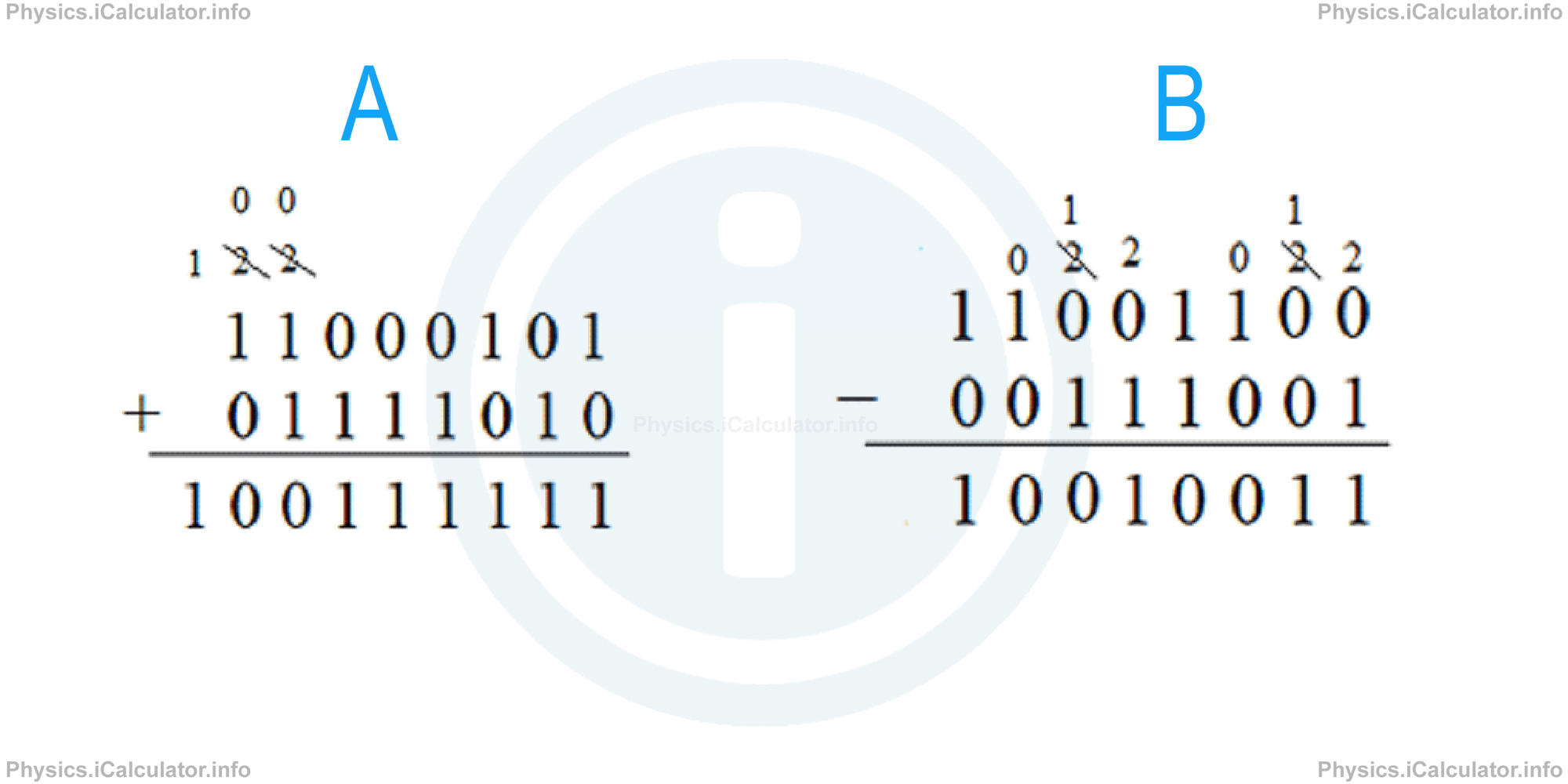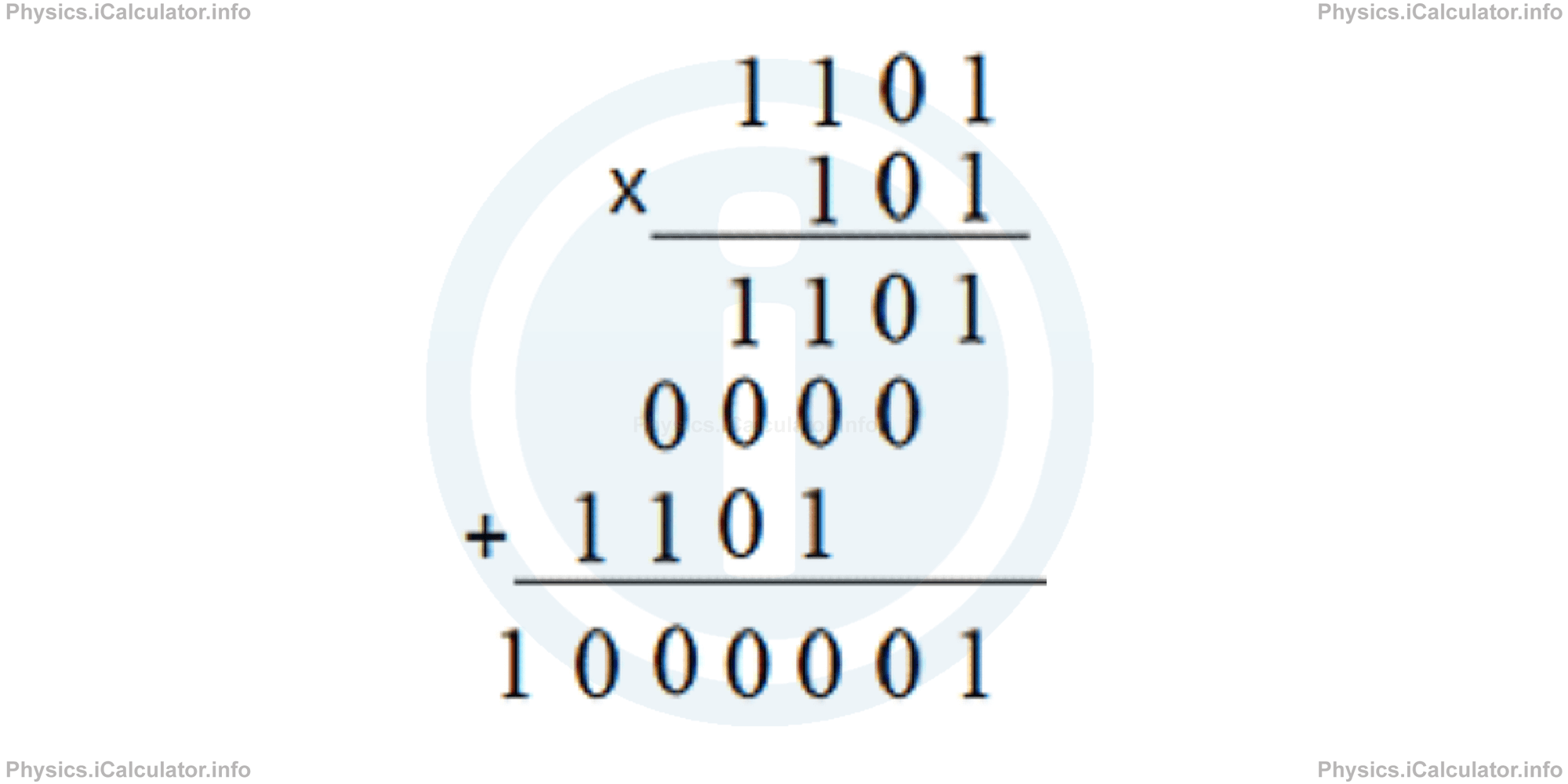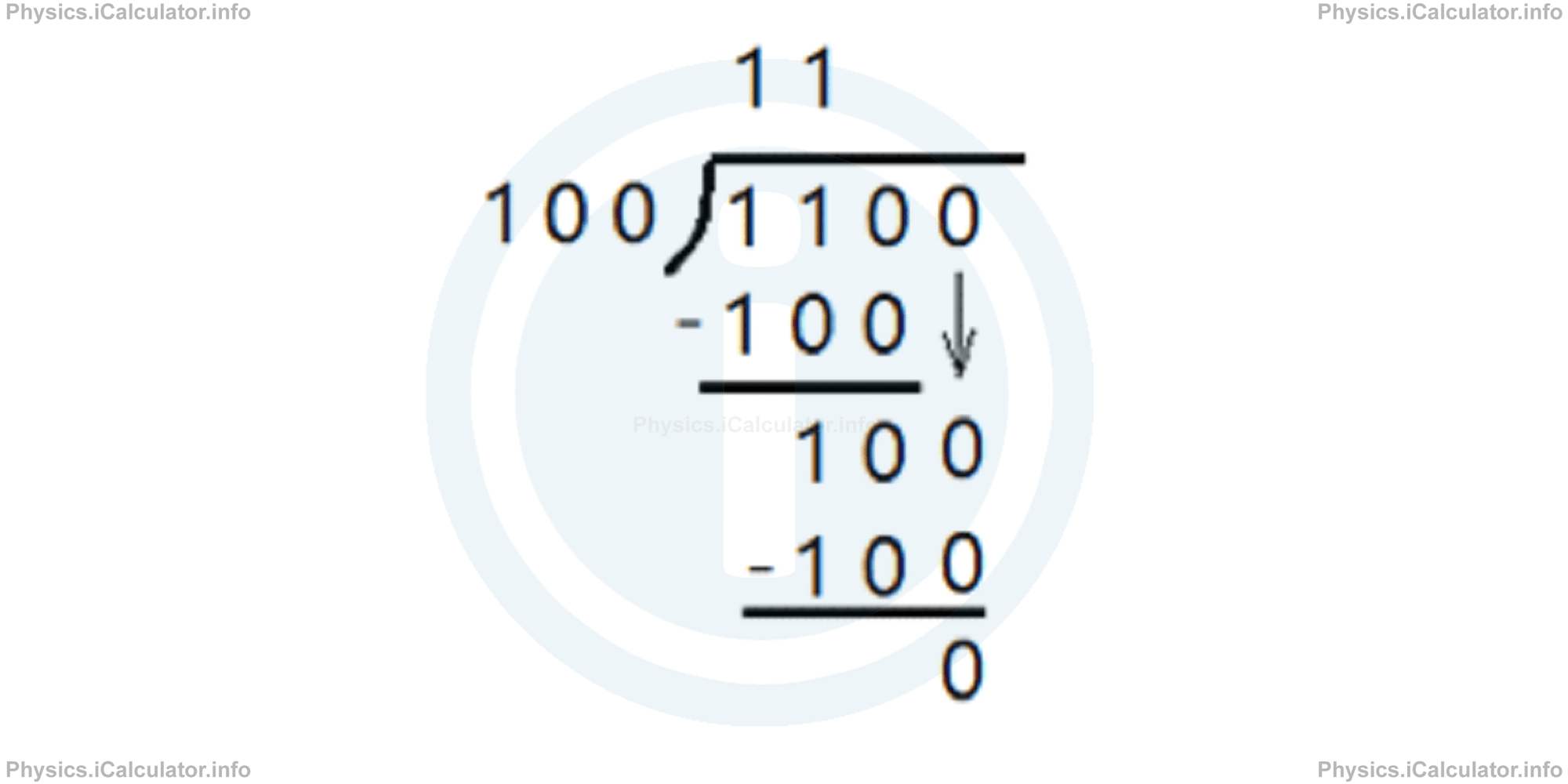Menu
Physics Lesson 17.1.4 - Binary Arithmetic
Please provide a rating, it takes seconds and helps us to keep this resource free for all to use
Welcome to our Physics lesson on Binary Arithmetic, this is the fourth lesson of our suite of physics lessons covering the topic of Electronic Essentials: Analogue and Digital Signals, Binary Operations and Logic Gates, you can find links to the other lessons within this tutorial and access additional physics learning resources below this lesson.
Binary Arithmetic
We can do the four basic operations (addition, subtraction, multiplication and division) in the binary system in the same way as we them do in the decimal system. The only difference is that in addition, the value of the digit on the left increases by 1 when the value on its right becomes 2 (like in decimal system in which the value of the digit on the left increases by 1 when the place value on its right becomes 10). On the other hand, in subtraction we borrow 2 instead of 10 from the place value on the right to make the subtraction when this is impossible. Let's consider a couple of examples in this regard.
Example 1
Do the following operations:
- (11000101)2 + (01111010)2
- (11001100)2 + (00111001)2
Solution 1
We can write the numbers in columns to make the operations easier. Thus, we have:

In multiplication, we can use the same procedure as used in the decimal system as well. Putting the numbers in column is very helpful. For example, if we have to multiply (1101)2 and (101)2, we get

If you are in doubt about the correctness of your result, you can quickly convert the numbers in base 10 numbers and do the multiplication. This can be used as a proof for your work. Thus, (1101)2 = 8 + 4 + 1 = (13)10 and (101)2 = 4 + 1 = (5)10. Therefore, we have 13 × 5 = 65 for the product. Let's check whether (1000001)2 = (65)10. We have
= 64 + 1
= 65
Therefore, the result obtained by the binary multiplication is correct.
As for the division of binary numbers, we use the same procedure as in decimal system. For example, we known that 12 ÷ 4 = 3. When this division is done in the binary system, we obtain:

Thus, we obtained (1100)2 ÷ (100)2 = (11)2
We can also express the decimal numbers written in base 10 number system using the decimal place to divide the whole and the non-whole part of the number. For example, the binary number 11010.101 corresponds to
= 16 + 8 + 2 + 1/2 + 1/8
= 26 + 4 + 1/8
= 26 5/8
= 26.625
in the decimal system. Obviously, not all decimal numbers can be converted into binary ones; they must be powers of 2 to do this.
You have reached the end of Physics lesson 17.1.4 Binary Arithmetic. There are 5 lessons in this physics tutorial covering Electronic Essentials: Analogue and Digital Signals, Binary Operations and Logic Gates, you can access all the lessons from this tutorial below.
More Electronic Essentials: Analogue and Digital Signals, Binary Operations and Logic Gates Lessons and Learning Resources
Whats next?
Enjoy the "Binary Arithmetic" physics lesson? People who liked the "Electronic Essentials: Analogue and Digital Signals, Binary Operations and Logic Gates lesson found the following resources useful:
- Binary Feedback. Helps other - Leave a rating for this binary (see below)
- Electronics Physics tutorial: Electronic Essentials: Analogue and Digital Signals, Binary Operations and Logic Gates. Read the Electronic Essentials: Analogue and Digital Signals, Binary Operations and Logic Gates physics tutorial and build your physics knowledge of Electronics
- Electronics Revision Notes: Electronic Essentials: Analogue and Digital Signals, Binary Operations and Logic Gates. Print the notes so you can revise the key points covered in the physics tutorial for Electronic Essentials: Analogue and Digital Signals, Binary Operations and Logic Gates
- Electronics Practice Questions: Electronic Essentials: Analogue and Digital Signals, Binary Operations and Logic Gates. Test and improve your knowledge of Electronic Essentials: Analogue and Digital Signals, Binary Operations and Logic Gates with example questins and answers
- Check your calculations for Electronics questions with our excellent Electronics calculators which contain full equations and calculations clearly displayed line by line. See the Electronics Calculators by iCalculator™ below.
- Continuing learning electronics - read our next physics tutorial: Electronic Components and Switching
Help others Learning Physics just like you
Please provide a rating, it takes seconds and helps us to keep this resource free for all to use
We hope you found this Physics lesson "Electronic Essentials: Analogue and Digital Signals, Binary Operations and Logic Gates" useful. If you did it would be great if you could spare the time to rate this physics lesson (simply click on the number of stars that match your assessment of this physics learning aide) and/or share on social media, this helps us identify popular tutorials and calculators and expand our free learning resources to support our users around the world have free access to expand their knowledge of physics and other disciplines.